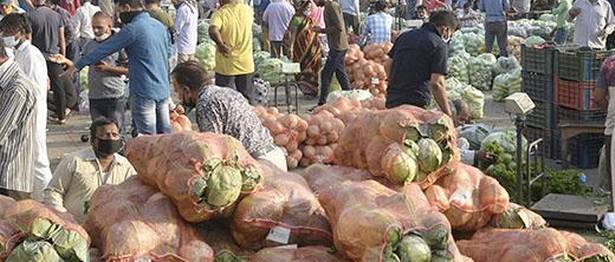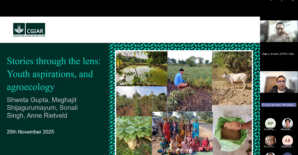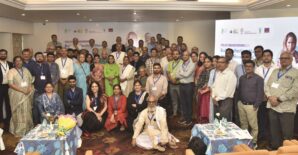Given how rural India is hit by Covid’s second wave, ‘grow local, sell local, consume local’ has assumed significance
Covid 2.0’s impact on the Indian hinterland has been devastating. During this phase villages and smaller towns registered more cases than large urban centres and rural areas are experiencing steeper curves of daily infection. Agriculture, the mainstay of the economy, is bound to be afflicted.
This is worrying as agriculture engages more than 42 per cent of the country's workforce, feeds a population of more than 1.3 billion, supplies inputs to many industries, and is the source of income for the largest consumer segment of the country.
In 2020, during Covid 1.0 lockdown, rural areas were largely unaffected, issues in the agriculture supply chain were sorted out fast, and the job guarantee programme, the MGNREGA, kept rural demand and the economy moving, and the disruption to agriculture was minimal.
Experts think that Covid 2.0 will take longer to subside and in all likelihood impact agriculture adversely. And if that happens, it will have a lasting impact on the rural and national economy; and we may not see a V-shaped recovery.
Instead, the recovery will be U-shaped; after this phase of the pandemic ends, the horizontal line of the U will be much longer.
The government stimulus and positive outlook of consumers raised urban demand at the end of 2020, but that is unlikely this year. Last year, lockdowns were imposed nation-wide. This year, however, the States are managing the lockdowns. The stringency and duration vary from State to State, and the economic impacts, too, will be patchy, but more severe.
Covid 2.0 is affecting not only agricultural operations but also the supply chain. After Covid 1.0, not all the agricultural workers had returned to work; some among them went home to vote (in the recently held Assembly polls) and to celebrate festivals (like Holi and Eid).
Their absence from the fields has affected operations and will delay kharif sowing. Most of the mandis of the Agricultural Produce Marketing Committees (APMC) are silent, and agri-input business has stagnated. The monsoon is predicted to be normal, and that is encouraging, but the way the virus has engulfed the countryside — which was largely insulated during Covid 1.0 — there is a possibility that the sowing of kharif crops will be delayed and the kharif foodgrains production target of 151.43 million tons for 2021–22 is likely to be missed.
Rural India does not have a proper health-care system, and large-scale virulent infections have already overwhelmed the system, such as it is. The rural poor is panic-stricken and the lockdowns have made implementing the MGNREGA progressively more difficult.
Uncertainty about the future has changed the mood of producers and consumers. Production has fallen, disrupting the supply chain, and reducing demand, and farmers are likely to bear the brunt. We need to make immediate, localised efforts to ensure that agriculture does not lose its momentum.
Corporations let local teams decide business activities and sell different products to different customers. The government, too, must decentralise its operating models, and use distinct decision-making, production, and supply chain strategies for each geography, cluster, or region — especially because mobility is limited, and farmers are petrified about their future.
‘Grow local, sell local, consume local’ needs to be the mantra now, because decentralising the planning, procurement, processing, and selling of locally grown crops to local consumer preferences will be more agile and the most effective in the short term.
The Bihar example
There is at least one precedent in agriculture and the rural economy: the horticulture department of Bihar collaborated with India Post to sell litchi and mangoes state-wide during the Covid 1.0 lockdown. The initiative benefited local farmers and made consumers happy by assuring the delivery of their favourite products at reasonable prices.
Farmer producer companies or cooperatives are promoted by the government, non-governmental organisations (NGOs), or corporate-supported initiatives. Local business units should learn from their success in implementing the ‘grow local, sell local, consume local’ strategy and respond to market disruptions and shifts in consumer preferences expeditiously and cogently.
None of this is to recommend an overhaul or redesign of the pre-pandemic operational strategies of agriculture management or suggest that the decentralised model is the panacea for all the problems of farmers and agriculture; however, unless the government and corporations decentralise decision-making and respond quickly, Covid 2.0 might well change the landscape of the rural economy. It is better to be prepared.
Niraj Kumar is Professor of Rural Management at XIM University, Bhubaneswar; and Anjani Kumar is Senior Research Fellow at IFPRI, South Asia Regional Office, New Delhi. Views expressed are personal. This news was originally published in Hindu Business Line.
Odisha’s Deputy Chief Ministers Inaugurate Gender Responsive Cell to Strengthen Inclusive Agricultural Governance: A pioneering unit within the DAFE, developed
The IFPRI-AERA session on “Transforming Agri-Value Chains: Emerging Frontiers for Agribusiness” held on 3 December at the Indian Council of Agricultural
24 September 2025, New York: The SAARC (South Asian Association for Regional Cooperation) Agriculture Centre (SAC), Dhaka, and the International



